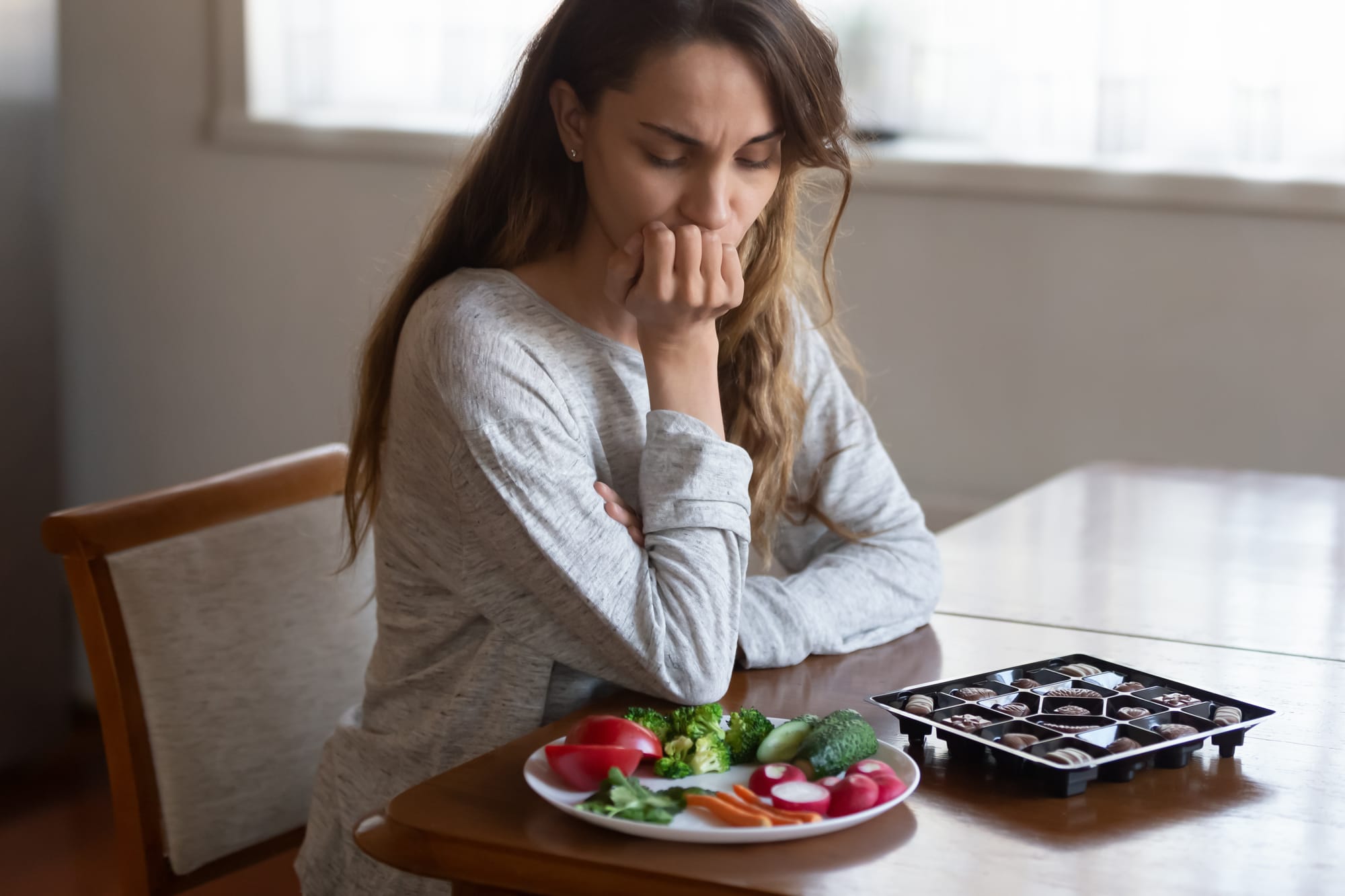The Ultimate Guide to Eating Right for Your Menstrual Cycle

Your menstrual cycle isn’t just about your period—it’s a dynamic process that affects your energy levels, mood, and overall well-being. By aligning your diet with the hormonal changes in each phase, you can boost energy, balance hormones, reduce PMS symptoms, and feel your best every day. Let’s dive into the best foods to eat during each phase of your cycle!
Phase 1: Menstrual Phase (Days 1-5)
What’s Happening? Your period starts, hormone levels drop, and your body sheds the uterine lining. You may feel fatigued, experience cramps, and crave comfort foods.
Best Foods to Eat:
✅ Iron-rich foods: Spinach, lentils, beets, red meat (to replenish lost iron and prevent fatigue)
✅ Magnesium-rich foods: Dark chocolate, nuts, seeds (to ease cramps and relax muscles)
✅ Vitamin C sources: Citrus fruits, bell peppers (to enhance iron absorption)
✅ Hydration boosters: Herbal teas, warm lemon water (to combat bloating and support digestion)
🚫 Foods to Avoid: Caffeine (can worsen cramps), processed foods (increase inflammation), excess salt (contributes to bloating)
Phase 2: Follicular Phase (Days 6-14)
What’s Happening? Estrogen levels start rising, bringing more energy, sharper focus, and a better mood. This is a great time to focus on nourishing, light foods that support cell growth and metabolism.
Best Foods to Eat:
✅ Lean proteins: Eggs, fish, chicken (for muscle repair and hormone production)
✅ Healthy fats: Avocados, nuts, olive oil (for brain function and hormonal balance)
✅ Fiber & antioxidants: Berries, whole grains, leafy greens (to support gut health and detoxification)
✅ Probiotic-rich foods: Yogurt, kimchi, kefir (for digestion and gut microbiome balance)
💡 Lifestyle Tip: Your energy is at its peak—this is the best time for strength training and high-intensity workouts!
Phase 3: Ovulatory Phase (Days 15-17)
What’s Happening? Ovulation occurs, and estrogen reaches its peak. You may feel at your most confident, social, and energized. To support egg release and hormone balance, focus on nutrient-dense foods.
Best Foods to Eat:
✅ Zinc-rich foods: Pumpkin seeds, chickpeas, shellfish (to support reproductive health)
✅ Vitamin B6 sources: Bananas, potatoes, poultry (to balance mood and reduce bloating)
✅ Anti-inflammatory foods: Turmeric, green tea, salmon (to keep hormones in check)
✅ Hydration boosters: Coconut water, herbal teas (for electrolyte balance)
🚫 Foods to Avoid: Excess sugar and alcohol (can cause bloating, inflammation, and hormone imbalances)
Phase 4: Luteal Phase (Days 18-28)
What’s Happening? Progesterone rises, preparing your body for a possible pregnancy. PMS symptoms like bloating, mood swings, and cravings can show up, making it crucial to choose stabilising, nourishing foods.
Best Foods to Eat:
✅ Complex carbs: Quinoa, oats, sweet potatoes (to stabilize mood and energy levels)
✅ Magnesium & calcium sources: Almonds, leafy greens, dairy alternatives (to ease PMS symptoms and cramps)
✅ Serotonin-boosting foods: Turkey, bananas, dark chocolate (to improve mood and promote relaxation)
✅ Hydrating options: Herbal teas, water with lemon (to reduce bloating and aid digestion)
🚫 Foods to Avoid: Excess salt, sugar, and caffeine (can worsen bloating, irritability, and energy crashes)
How to Sync Your Diet with Your Cycle
✔ Plan meals based on your cycle phase to support hormonal balance
✔ Keep healthy snacks on hand to manage cravings effectively
✔ Prioritize hydration and sleep to reduce PMS symptoms
✔ Incorporate movement and stress-relief techniques like yoga and meditationBy aligning your nutrition with your menstrual cycle, you can take control of your hormonal health, improve your well-being, and feel more balanced every day!
📌 Bookmark this guide and start syncing your diet with your cycle today! Need help with meal planning? Reach out for personalized nutrition coaching.
References:
- Smith, L. et al. (2022). Nutritional Strategies for Hormonal Balance. Journal of Women's Health, 31(4), 567-582.
- Johnson, R. & Lee, M. (2021). The Role of Diet in Managing PMS Symptoms. Nutrition & Metabolism, 18(3), 245-260.
- Harvard T.H. Chan School of Public Health. (2023). Nutrition and Women’s Health. Available at: https://www.hsph.harvard.edu